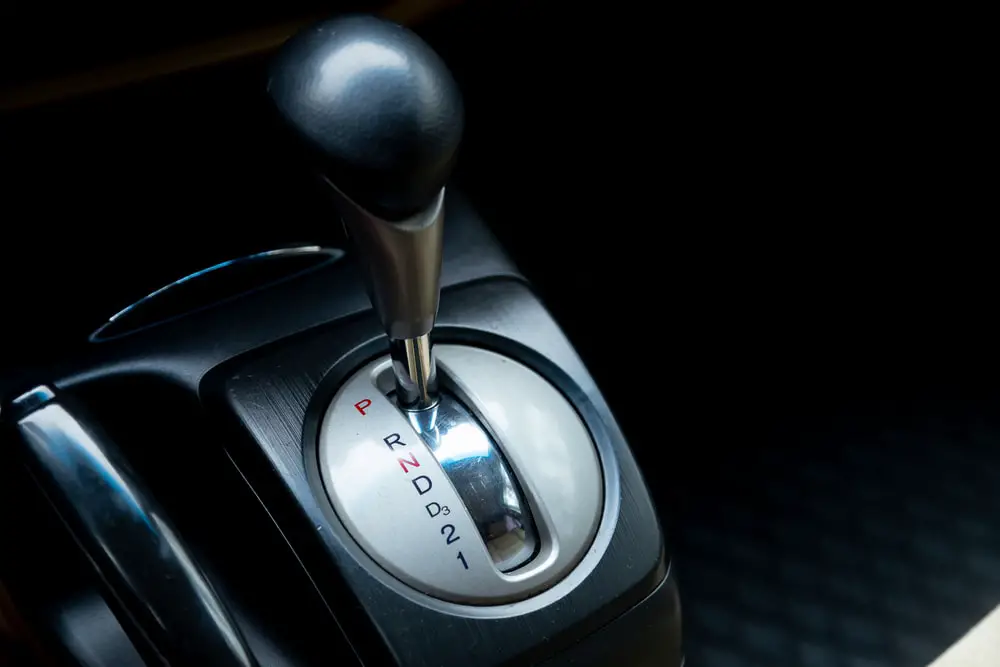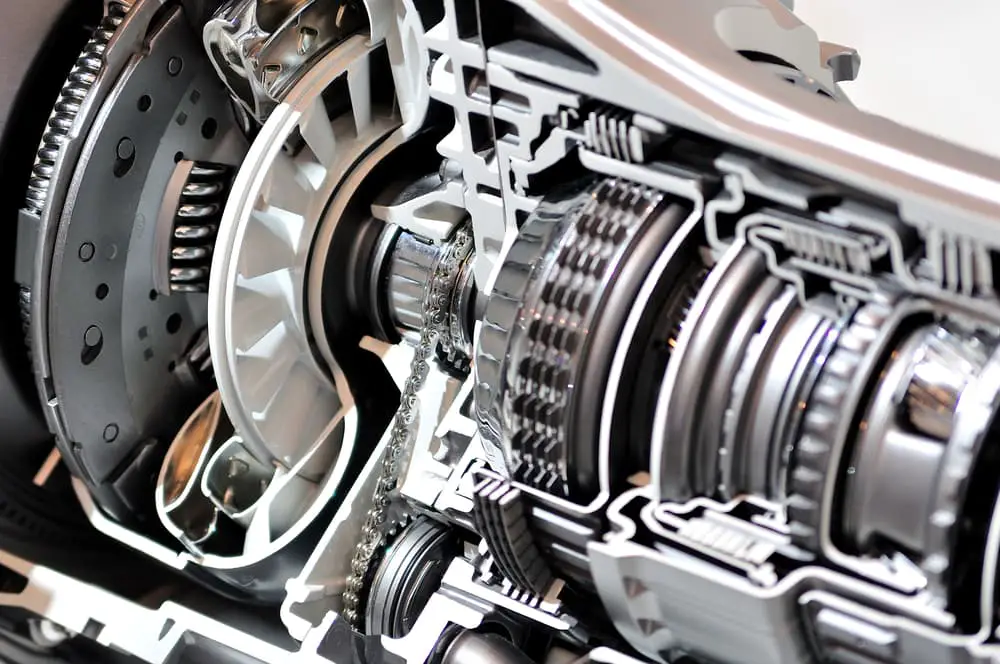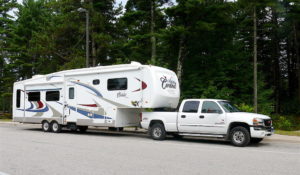Overdrive is not rocket science, nor will it make your car go faster. But you may wonder, “what is OverDrive in a vehicle?”
It’s simply the highest possible gear in an automatic and manual transmission. Using overdrive will not only benefit fuel economy. Using overdrive – or leaving it ON in an automatic car – also helps in preserving your car’s engine and transmission.

Overdrive Gear Explained
Let’s say you have an older Honda Civic manual with five gears and a reverse gear.
In that situation, overdrive is the fifth gear. Overdrive allows the engine to operate at lower RPMs when traveling at higher speeds. The result is better fuel economy and reduced engine wear. Every time an engine revs higher than needed, you are inducing added wear and tear into the motor. Shifting into overdrive or top gear is an easy way to avoid premature wear and tear. You’ll also enjoy a quieter ride since the engine is spinning at the lowest possible speed as well.
It’s mostly the same in a truck. Let’s say you have a newer Ford F-150 with an EcoBoost 2.7-liter V6 with a six-speed automatic gearbox. In this case, overdrive is the sixth gear. It’s engaged by the engine CPU and gearbox as deemed necessary, particularly when cruising on the highway.
For this example, let’s assume the Ford has an O/D or Overdrive button. For one thing, pressing the button and engaging the O/D light in the dashboard doesn’t mean the system is ON. In fact, it’s the exact opposite. In most vehicles, pressing the O/D button near the shift lever turns overdrive OFF.
Overdrive is the ability to engage the highest possible gear, turning it off means the transmission will only shift to lower gears. With a six-speed automatic, this means the vehicle can only shift to fifth gear.
Did you know that Overdrive is rarely seen anymore?
How does overdrive work?

Overdrive is a set of gears inside a gearbox. But unlike lower gears with gear ratios that are above one, overdrive gears have a lower ratio between 0.6 to 0.8:1. With overdrive engaged, it means the wheels of the car will turn more for every engine rotation.
In this way, higher speeds are maintained while the engine revolution remains low. Again, this is favorable over long stretches of open highways. The ride will not only be smoother and quieter, but the engine is churning merrily with less stress.
Does it affect fuel economy?
Yes, it does.
Before the new millennium, the majority of vehicles with automatic transmissions only had four gears. This means overdrive is fourth gear and only engages at certain engine speeds. Meanwhile, most manual cars have five or six-speed gearboxes. It’s the reason why manual-equipped vehicles were deemed more fuel-efficient than automatic models.
But now, it’s different. With Continuously Variable Transmissions (CVT), dual-clutch gearboxes (DCT), or automatics with seven to ten gears, automatics are more fuel-efficient than a Manual transmission
Whether you have an older or newer automatic transmission, leaving overdrive in the ON position is needed for good fuel economy. But, pressing the button (turning it OFF) results in the exact opposite. Locking out the top gear means higher engine speeds at any given gear. Higher engine speeds mean the motor is burning more fuel.
[su_icon_text icon=”icon: check” icon_color=”#00a9e0″ icon_size=”33″]When should you use it?[/su_icon_text]

There’s a ton of debate about this issue, but the answer is easy enough to understand. If car manufacturers wanted overdrive to be OFF frequently, the default setting in an automatic with overdrive should be OFF. However, this is not the case.
Since the overdrive button turns it off, it means overdrive should be left ON for a majority of driving duties. This includes driving in the city and in stop-and-go traffic. At slower speeds, a modern automatic transmission will shift to the highest gear whenever possible to save fuel. And yes, this even means shifting to the highest gear if deemed necessary. In this way, you stand a chance of saving more fuel even during intolerable, bumper-to-bumper traffic.
The same rule applies when driving on the highway. At higher speeds, a modern auto gearbox will search for the highest possible gear to save fuel. Remember, minimizing engine RPMs at any given moment reduces the potential of wear and tear.
[su_icon_text icon=”icon: remove” icon_color=”#fb4a2a” icon_size=”33″]When shouldn’t you use it?[/su_icon_text]
There are some cases when turning OFF the overdrive function is beneficial. When towing heavy loads, overdrive should be OFF to minimize the occurrence of ‘gear hunting’. This occurs more when driving over a hilly road. In this situation, leaving overdrive in the OFF position is most helpful. Also, ‘gear hunting’ is not good for the transmission, especially when pulling or carrying heavy loads. This might lead to overheating, which means the transmission fluid is boiling up.
[su_panel background=”#ffff” shadow=”2px 2px 2px #eeeeee” radius=”4″] [su_icon_text icon=”icon: wrench” icon_color=”#00a9e0″] Pro tip: Overdrive is not found in most modern vehicles. It’s equivalent could be called “Tow Mode”[/su_icon_text] [/su_panel]
Yet, it all depends on the driving situation.
For example, if you’re towing a trailer on a steady, level highway, leaving the overdrive ON is your best recourse. But as traffic piles up and you begin changing speeds, turning OFF overdrive will prevent your gearbox from overheating.
But if you’re driving normally (or not pulling a trailer), the overdrive function should be ON at all times to maximize engine efficiency.
How to use overdrive in an automatic car?
Here’s a couple of tips on how to use overdrive more effectively.
[su_panel background=”#ffff” shadow=”2px 2px 2px #eeeeee” radius=”4″]City driving
- Overdrive should be left ON unless when towing a heavy trailer
Interstate
- Overdrive should be engaged, unless towing/carrying heavy loads at low to medium speeds
- Overdrive should be ON at higher speeds
Speeding up and passing
- Overdrive should be ON when passing on level roads
- Overdrive should be ON when speeding on level roads
- Overdrive should be OFF when passing and towing a trailer
- Overdrive should be ON when speeding up and towing a trailer
- Overdrive should be OFF when passing on an inclined or hilly road
Downshifting
- With overdrive OFF, the transmission waits before shifting to a lower gear
- With overdrive ON, the gearbox shifts to lower gears (especially in Sport mode)
Towing
- At low speeds, overdrive should be OFF
- Over hilly roads, overdrive should be OFF
- Going downhill, overdrive should be OFF
- At steady highway speeds, overdrive should be ON to save fuel
When to turn it OFF?
In truth, there are few instances when it should be turned OFF. In normal, day-to-day driving, leaving it ON is recommended. The only exemption is when you’re carrying heavy cargo or towing a trailer. When in doubt, read the owner’s manual since not all automatic transmissions are made the same. In most cases (like in a CVT gearbox), the transmission will have no overdrive button.
Pro Tip The O/D button is usually near your shift lock release.What damages can be caused by incorrect use of overdrive gear?
Let’s say you accidentally pressed the O/D button to OFF, and you forgot about it. This means the gearbox won’t shift into high gear, with the transmission and the engine working unnecessarily hard as you go along. While doing this won’t damage your engine at that exact moment, it will eventually lead to dirtier engine oil – the primary cause of wear and tear.
The O/D light in my dash is blinking, is this bad?
![]()
In most cases, yes. You see, the transmission has a warning light similar to the motor with its check engine light. In some vehicles, the O/D warning light will blink if the gearbox is overheating or if the system detects an error. Whatever the case, a flashing or blinking overdrive light is not a good thing.
If the O/D light blinks or flashes intermittently while driving, stay calm and reduce your speed. If you notice jerking or hesitation, pull over and stop and vehicle, but keep the engine running. Engage the gear lever to Park or Neutral and engage the parking brake. If it’s safe to do so, get down from the vehicle and pop open the hood. You’re probably dealing with an overheating transmission.
Wait for at least 10 to 15 minutes and check if the blinking O/D light goes away. If not, call a mechanic and have the problem diagnosed by a vehicle scanner. Similar to the check engine light, the CPU also stores error codes from the transmission or gearbox. Knowing the error code is the easiest way to trace the source of the problem.
Conclusion
Overdrive is simply a set of gears that prevents unnecessary wear and tear to vital components. If you drive like a normal human being, leaving it ON is the best way to make the most out of every drop of fuel.